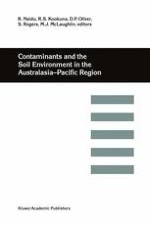The Australasia-Pacific Region supports approximately 50% of the world's population. The last half-century has witnessed a rapid increase in the regional population, agricultural productivity, industrial activities and trade within the region. Both the demand for increased food production and the desire to improve the economic conditions have affected regional environmental quality. This volume presents an overview of the fate of contaminants in the soil environment; current soil management factors used to control contaminant impacts, issues related to sludge and effluent disposals in the soil environment; legal, health and social impacts of contaminated land, remediation approaches and strategies to manage contaminated land, some of the problems associated with environmental degradation in the Australasia-Pacific Region and steps that we need to take to safeguard our environment.
